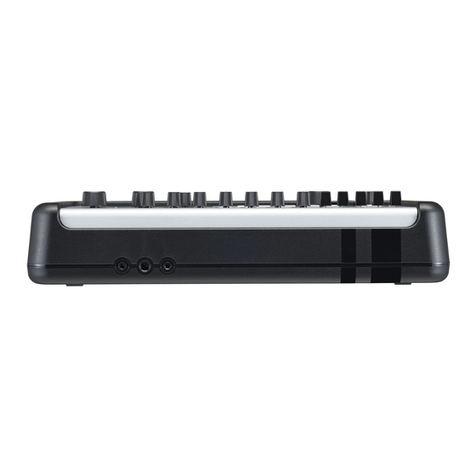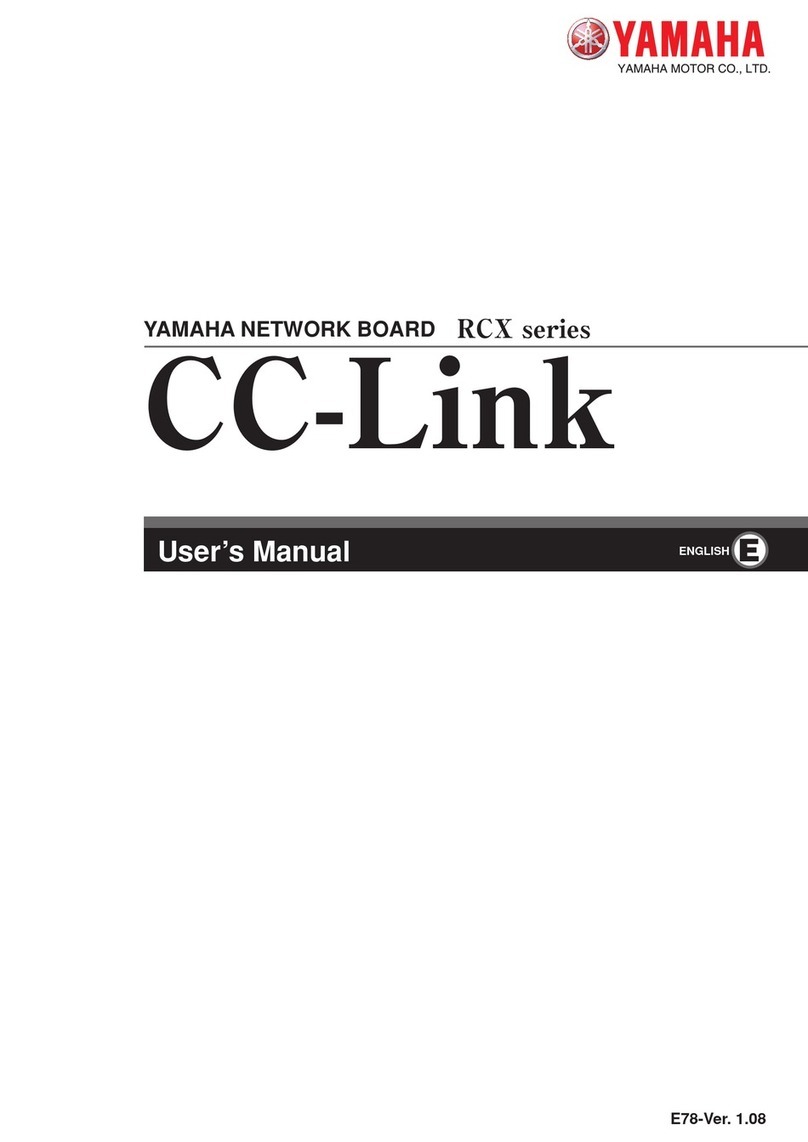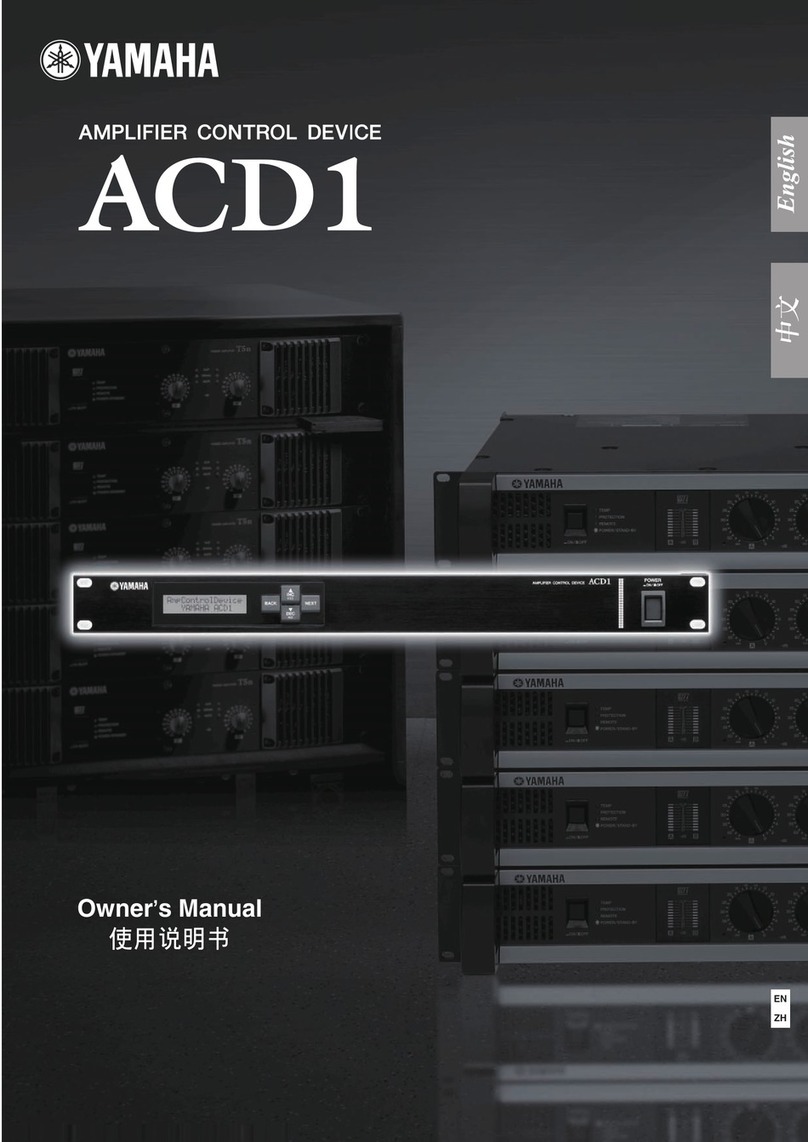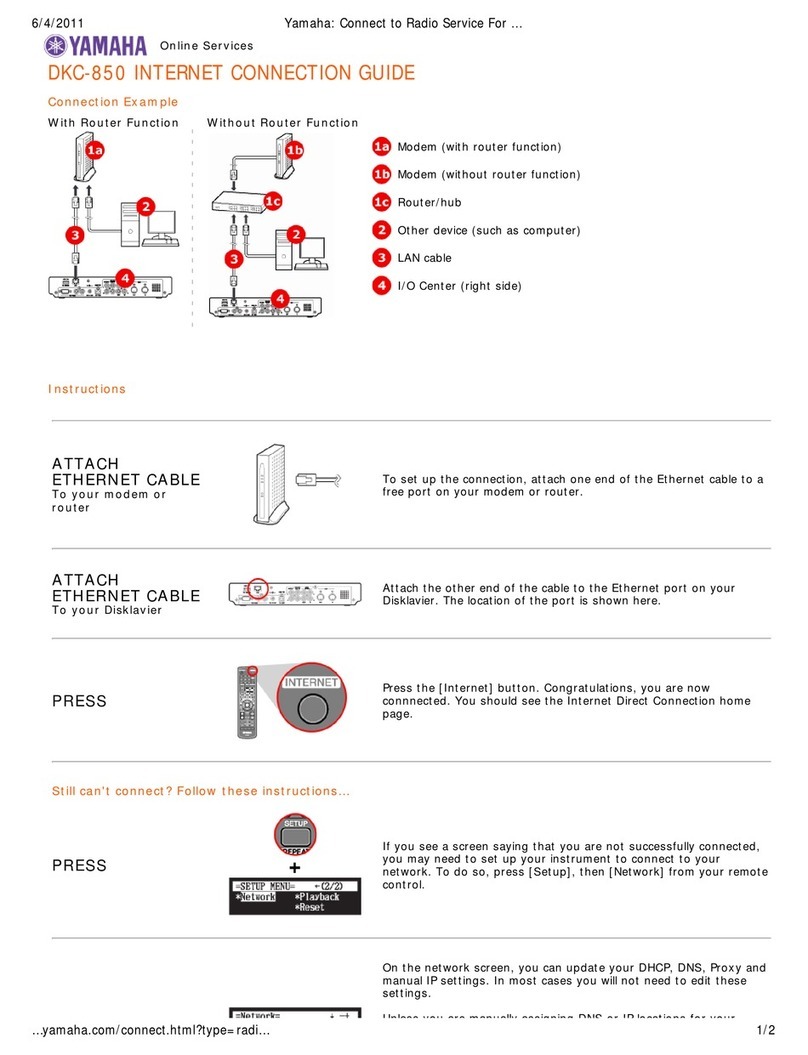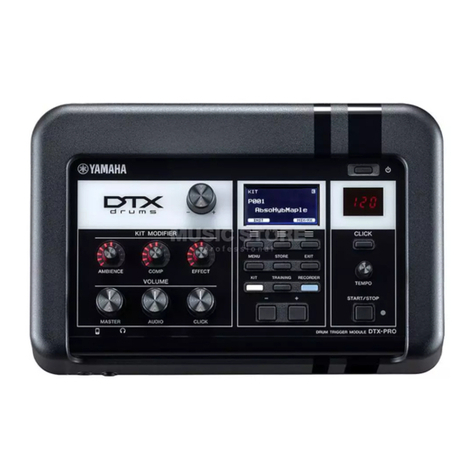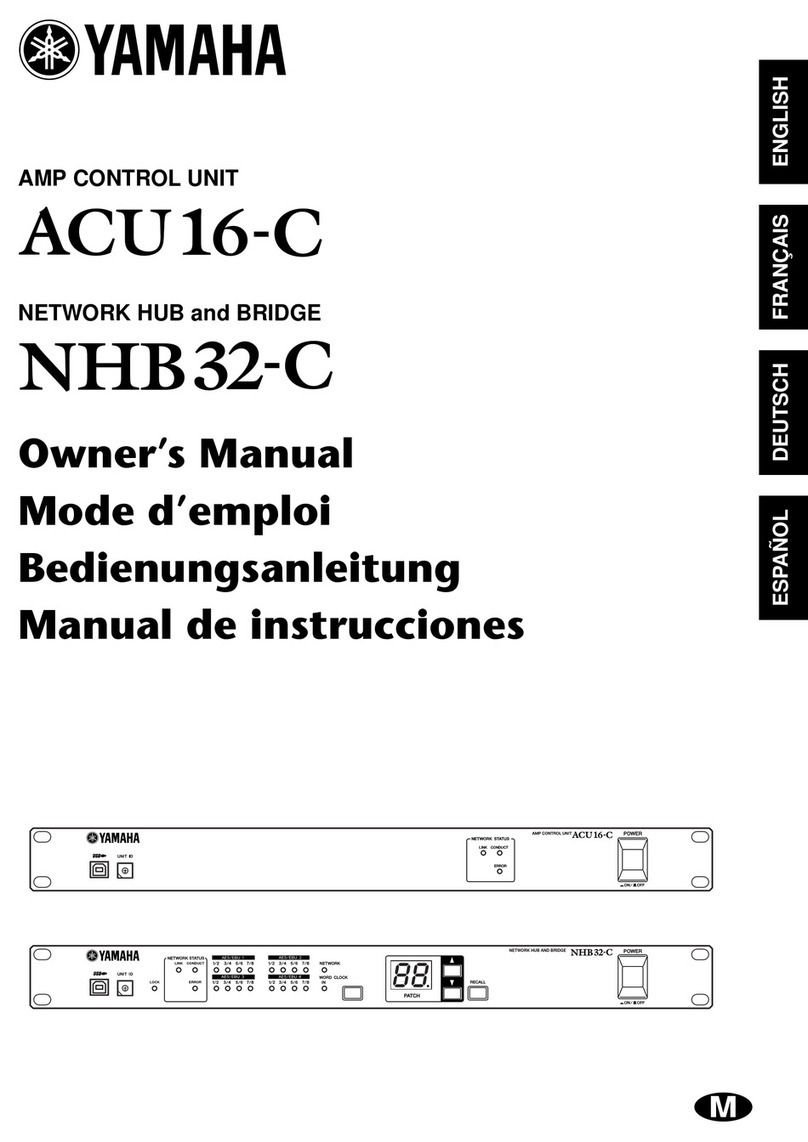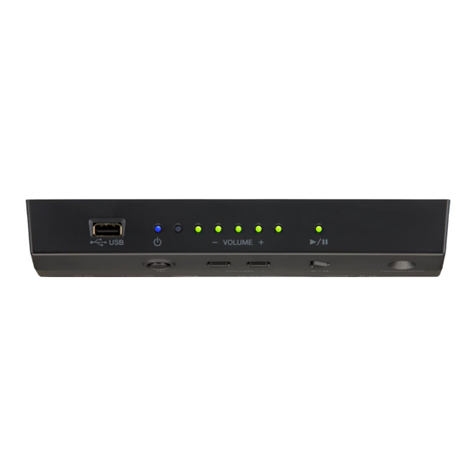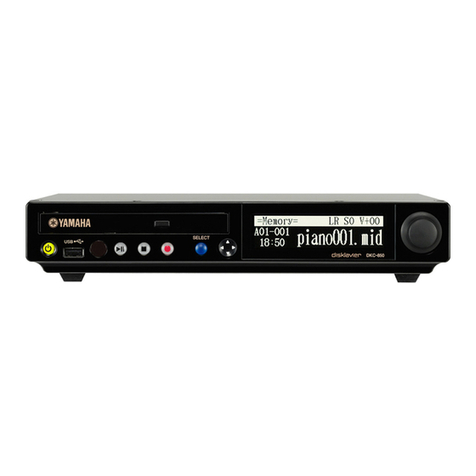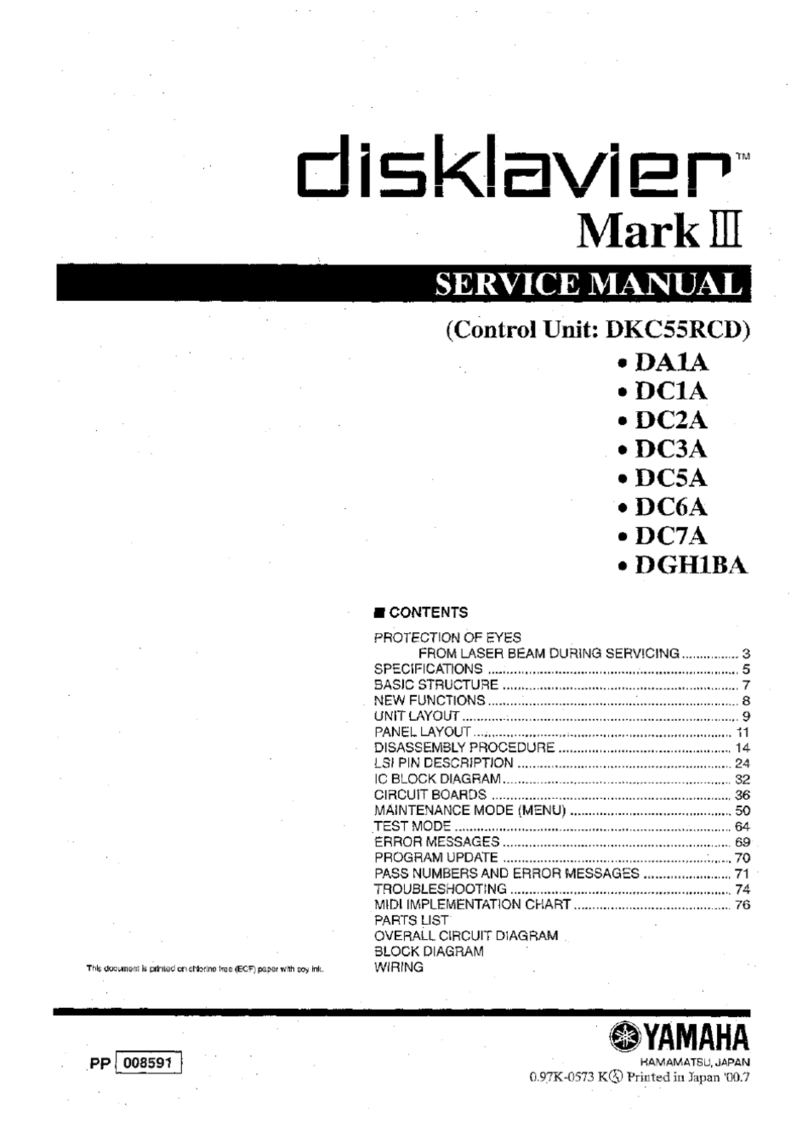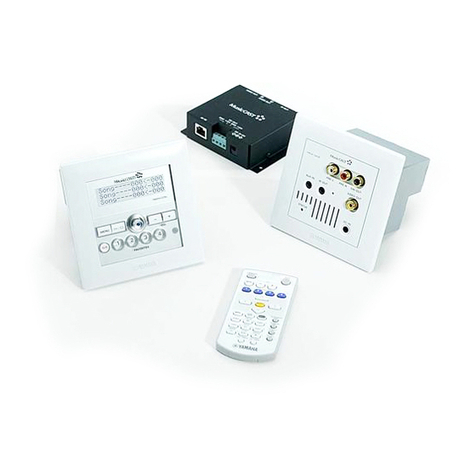
B
Main
Unit
(input)
Number
of
Input
Channels
-------------------
1
Circuit
-----------
Electronically
Balanced
Input
Impedance
--
greater
than
or
equal
to
10
kohms
Nominal
input
level
--------------------
14dB
(Headroom
---------------------------------
14dB)
Maximum
Input
Level
-------------------
+20dB
Connector
“---------------------------
XLR-
3-31
(Output)
Number
of
Output
Channels
essent
2
(L
and
B)
Circuit
“ress
Electronically
Balanced
Output
Impedance
--------
600
ohms
or
less
Connector
«trees
XLR-
3-32
Nominal
output
level
--------------------
+4dB
Maximum
output
level
--------------------
+18dB
Frequency
Response
—
20Hz
to
18kHz
+/-1dB
Harmonic
Distortion
(in
Delay
Mode)
ej
less
than
or
equal
to
0.0396
@lkHz
during
maximum
output
Ш
Remote
Control
Unit
Liquid
Crystal
Display
(LCD)
Modes
W/F
-
Wave
Form
F/C
-
Filter
and
Crossover
R/T
-
Reverberation
Time
RATIO
-
Reverberation
Time
Ratio
E/R
-
Early
Reflection
Mode
REV
-
Reverb
Mode
P/S
=
Preset
Titles
M
=
Memory
Titles
Memory
RAM
(01599)
eerte
9
sets
Environmental
Temperature
ORO
0
to
40°C
(32°
to
95°
P)
Power
Requirements
(Supplied
Through
Cable
From
Main
Unit)
-----------
DC+/-12V
Power
Consumption
------------------------
15W
ТЕРІ
рингер
сен
кімнен
1.8kg
(4
lbs.)
Dimensions
(WXHXxD)x
ROSAS
1-3/8”
x
1-3/4”
x
11-3/8”
Dynamic
Range
(186mm
x
45mm
x
289mm)
].Reverberation
Mode
--------------------
85dB
2.Echo
Mode
---------------------------------
85dB
Remote
Control
Cable
Length
3.Delay
Mode
·-------------------------------
OB
.-
e
10m
(33
ft.)
Sampling
Frequency
---------------
44.
1kHz
*
Measurements
exclude
feet,
knobs,
connectors,
and
other
protuberances.
Number
of
Quantization
Bits
--------------
16
Memory
*
А11
specifications
subject
to
change
ROM
(1930)
sores
ena
dese
etim
30
sets
without
notice.
RAM
(31490)
eee
60
sets
The
memory
(RAM)
is
backed
up
after
cutting
power
with
Ni-Cd
batteries.
Environmental
Temperature
UNDER
0
to
40°C
(32
to
95°
P)
Power
Requirements
U.S.
Мегѕіоп---------------------
AC110V—120V
General
Version
---------------
AC220V~240V
Power
Consumption
---------------------------
150W
Weight
>------------<---------------
10ке
(22
Ibs.)
Dimensions
(WXHxD)x
Бо
ag
oes
18-7/8”
x
5-1/4”
x
14-5/8”
(480mm
x
133mm
x
372mm)
*
Measurements
exclude
feet,
knobs,
connectors,
and
other
protuberances.
